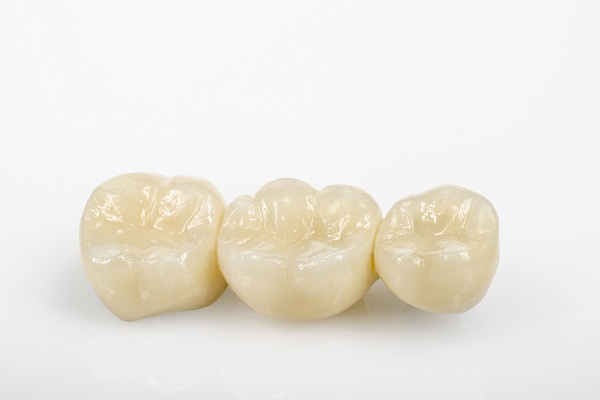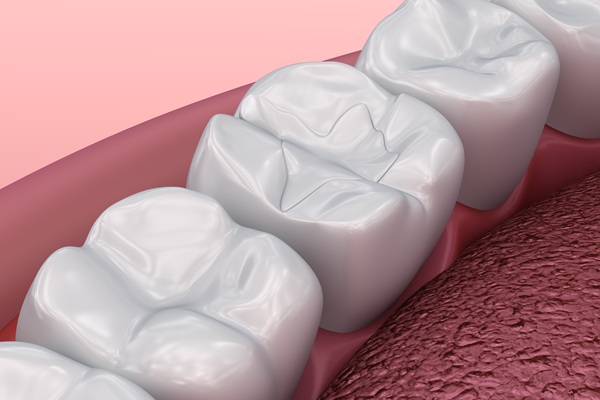Root Canal Therapy to Repair an Infected Tooth

If a dentist has told you that you need root canal treatment, it is usually because you have an infected tooth. Also known as endodontic therapy, root canal therapy can help to repair an infected tooth and save it from extraction. The procedure is relatively simple and involves getting rid of the infected material inside the tooth to stop the pain and restore normal dental functions.
About root canal therapy
A dentist might recommend root canal therapy if a patient is experiencing sore gums, toothache, facial swelling or discomfort when eating. Contrary to what people might think, the procedure is not painful and can prevent the need to remove the tooth. With the anesthetic options and techniques available nowadays, the procedure is as comfortable as getting a dental filling.
This endodontic procedure is required to treat tooth infection or inflammation that has gotten to the tooth pulp. Without dental intervention, the infection can cause a tooth abscess, which may damage the bone supporting the tooth. The abscess is how the body attempts to eliminate the infection. It is a painful condition and makes the tooth vulnerable to damage. Usually, when a filling or dental crown is no longer enough to save the tooth, a root canal is the next resort.
Understanding the root canal procedure
The root canal procedure entails removing the infected pulp and nerve material inside the tooth, then filling and sealing the root canals. During the treatment, the dentist will clean the insides of the tooth properly and fill it with a rubber-like material known as gutta-percha. Afterward, the dentist will apply a temporary dental crown or filling to protect the tooth because a treated tooth is vulnerable to damage.
Patients will need to avoid chewing or biting hard foods with the treated tooth until the restoration process is complete. A follow-up visit is required after the treatment. During this appointment, the dentist will take off the temporary filling or crown and replace it with a permanent dental crown to complete the treatment.
Root canal aftercare
After the treatment, patients will receive instructions from the dentist on how to care for their teeth properly. With adequate care, the treated teeth can last a lifetime. Root canal therapy has a high success rate and is significantly less invasive or complicated than the alternative, which is extracting the tooth and replacing it with a bridge or implant. The treatment saves the infected tooth and restores normal dental functions.
Since tooth decay can still affect the treated tooth, excellent oral hygiene and routine dental appointments are vital to prevent future problems or reinfection. The dentist will take an x-ray of the tooth after some time and compare it with the x-ray taken before the procedure. This will show whether the root canal treatment was successful and whether the bone is being regenerated or not.
Do you need a root canal?
If you have an infected tooth, root canal therapy can likely repair the tooth. To get started, schedule an appointment with a dentist for a consultation.
Request an appointment here: https://www.myddsny.com or call Inna Goykman-Amir DDS at (718) 416-6364 for an appointment in our Brooklyn office.
Check out what others are saying about our dental services on Yelp: Root Canal Treatment in Brooklyn, NY.
Related Posts
Root canal therapy can restore your oral health. The treatment aims to remove the tooth’s infection and stop the pain. Anything can cause dental pain. It may signal your need for endodontic treatment. If you want to know when a dentist would recommend root canal therapy, here are the details.Pain may indicate an immediate need…
Looking for root canal information? Understanding the root canal process is necessary for those who are in need of root canal therapy to improve their oral health. Part of the process is choosing a restoration option to protect the treated tooth from further damage, as lost teeth need to be replaced. Ready to find out…
Root canal treatment is often successful at repairing and saving an infected or severely damaged tooth. A crown can be used to restore your tooth after the procedure. But it needs to be put in place at the right time. Read on to learn more about when you should get a crown after a root…
If you desire a more aesthetically pleasing smile, dental veneers are options that you should consider. Veneers are thin, customizable shells created to cover the front sides of the teeth. A dentist will often suggest this option when there are imperfections on the teeth, some of which are covered in this article. Continue reading to…


